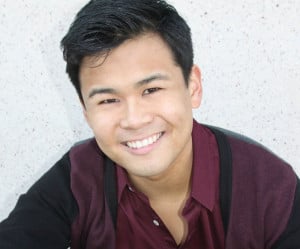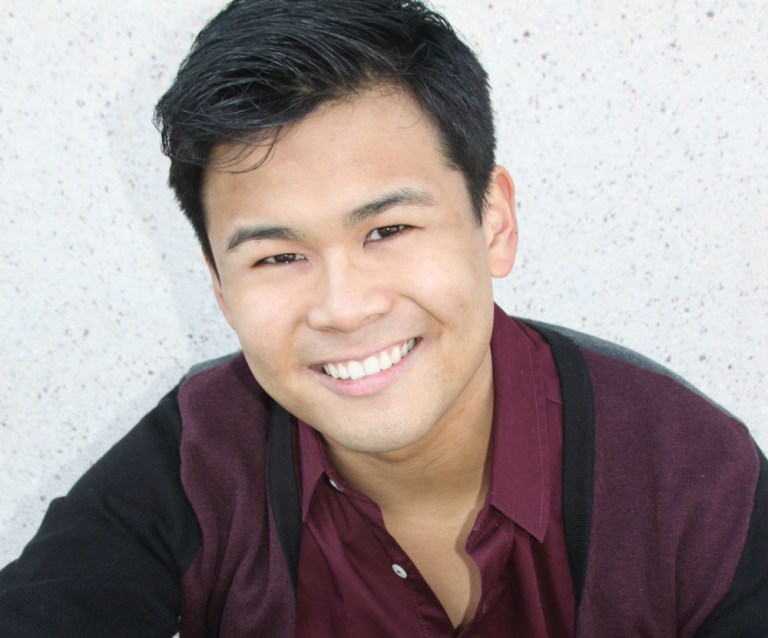
“‘Hairspray’ is generally seen as this cotton-candy musical,” he remarked over dinner on an unremarkable Thursday evening. The notion that “Hairspray” is fluff, lacking content — that’s what Ken Savage ’14 is out to disprove in his upcoming production of the iconic 2002 musical, which was adapted originally from the John Waters film. On the surface, it’s the story of a girl who’s out to show the world what makes her special, but it’s also a story of sharp racial divisions and the breaking down of prejudice. The hot button issue of race, however, is not foreign to Savage, who has experience as a minority actor and has directed shows that challenge traditional notions of race.
Realizing in his junior year that opportunities for non-white actors are strictly limited (only 2-3 percent of roles on Broadway go to Asian Americans), Savage made the transition to directing at Stanford. Most notably, he directed a mixed-cast production of “My Fair Lady,” in Bing Concert Hall last year, which was well-received for its innovative and forward-looking framing of race. In light of recent events, Savage had much to say on the topic of race in theater and how it will inform his directing of “Hairspray.” He insists: “We need to be thinking about theater in re-imagined ways in order to ‘break’ how we perceive American theater, because American theater is white, conservative, heterosexual [and] male-dominated.”
Below is an excerpt from the conversation we had with him:
The Stanford Daily (TSD): Would you say your intent as a director is to make social commentary?

Ken Savage (KS): I would say that my goal is to get the whole room (actors, designers, audience members) thinking about the world in a different way. With regards to “My Fair Lady,” [I knew] audiences would think about the world differently if we told it through this interesting, Oriental-inspired aesthetic.
TSD: In what ways are you applying that mindset to your directing of “Hairspray?”
KS: There are a couple things that are “non-traditional” about “Hairspray.” It has this underlying story of the Civil Rights Movement and integration in this nitty-gritty city of Baltimore, of all places. In these urban, industrial cities, we have people of all colors and backgrounds, and I don’t think we should ignore that. While I do respect the racial specification of the leads in the show, we have cast members of Asian and Latino descent, which was really important to me. And in light of Ferguson and Eric Garner, we see that these issues are not just black and white; we see what it means to stand in solidarity with a race with which we don’t necessarily identify. It’s the same thing in the ’60s in that we had the parallel Asian -American movement fueling the Black Civil Rights Movement. The other allies, besides Tracy Turnblad, in the [Civil Rights] Movement — of other backgrounds — made it a victory. For example, our Penny and Mrs. Pinkleton are Asian in this production. It was really important to me that we have an Asian ally with Tracy, who supports integration, and who ultimately falls in love with Seaweed, which is—to me—a more interesting interracial relationship. Again, with regards to “Hairspray,” because we see these marginalized communities coming together for the greater good, everyone wins. “You Can’t Stop the Beat” is an anthem for them. And now, we’re seeing history repeat itself. I think “Hairspray” is a great opportunity to learn the lessons of 1962 and deal with our current issues.
TSD: You mentioned the “Greater Good” earlier. How would you qualify this “Greater Good?”
KS: Equal opportunity. Equal representation in the media. Our production of “Hairspray” is largely inspired by how the television has defined our perception of beauty. [There is] a lack of representation of minorities on TV. Audience members, particularly children, are inspired by the role models they see on TV and onstage. As someone who aspired to be an Asian-American actor growing up, I didn’t have that (a role model). There was rarely someone who looked like me onstage. Maybe the ultimate message that I’m hoping [for] is that artists have a responsibility to comment on social injustice and change that in some way.
TSD: Is the social injustice in this circumstance the underrepresentation of minorities in media?
KS: Yeah, we just want more roles! We want more TV shows; we want more movies.
TSD: Do you think that these “shows” should be written towards underrepresented parties? How do we include previously disenfranchised parties in the mix?
KS: You have to produce works that people will watch. At the end of the day, look at who comes to theater: it’s these white, grey-hairs. It’s hard to get disenfranchised communities to come to theater if the theater’s not producing work that is interesting to them. It’s difficult to cultivate a [minority] audience.
TSD: Having directed both on and off Stanford’s campus, how are things different in the professional realm?
KS: The harsh reality is that Stanford doesn’t produce theater professionals. We are not an arts school. The theater department is not practice-based, as much as we try to be; much of our [theatrical] education comes from extracurricular theater.
TSD: Is experimental theater — like using mixed-race casts — as well-received outside of Stanford?
KS: Oh no! I don’t know if I would have gotten nearly as much funding to be honest. I actually have been thinking recently, “If I had produced [“My Fair Lady”] in San Francisco, what theater company would have taken it? Where would the money come from?” Really, it’s why I’m at Stanford for another year: to do bold, re-imaginative theater.
Rams Head’s Theatrical Society’s production of “Hairspray,” directed by Ken Savage, will be produced in Memorial Auditorium April 10-11 and 16-18. For more information, visit Ram’s Head Theatrical Society’s website.
Contact Ian Anstee at ianstee5 ‘at’ stanford.edu.
